Lesson summary
Students will explore how Aboriginal and Torres Strait Islander athletes have overcome challenges and barriers throughout their athletic careers. Students research an Aboriginal and/or Torres Strait Islander athlete and create a digital presentation about their chosen athlete.
Learning intentions
Students will:
- research Aboriginal and Torres Strait Islander Commonwealth Games athletes.
Success criteria
Students can:
- discuss factors that influence these Aboriginal and Torres Strait Islander athletes
- identify challenges this athlete has encountered and strategies or actions they have implemented.
Lesson guides and printables
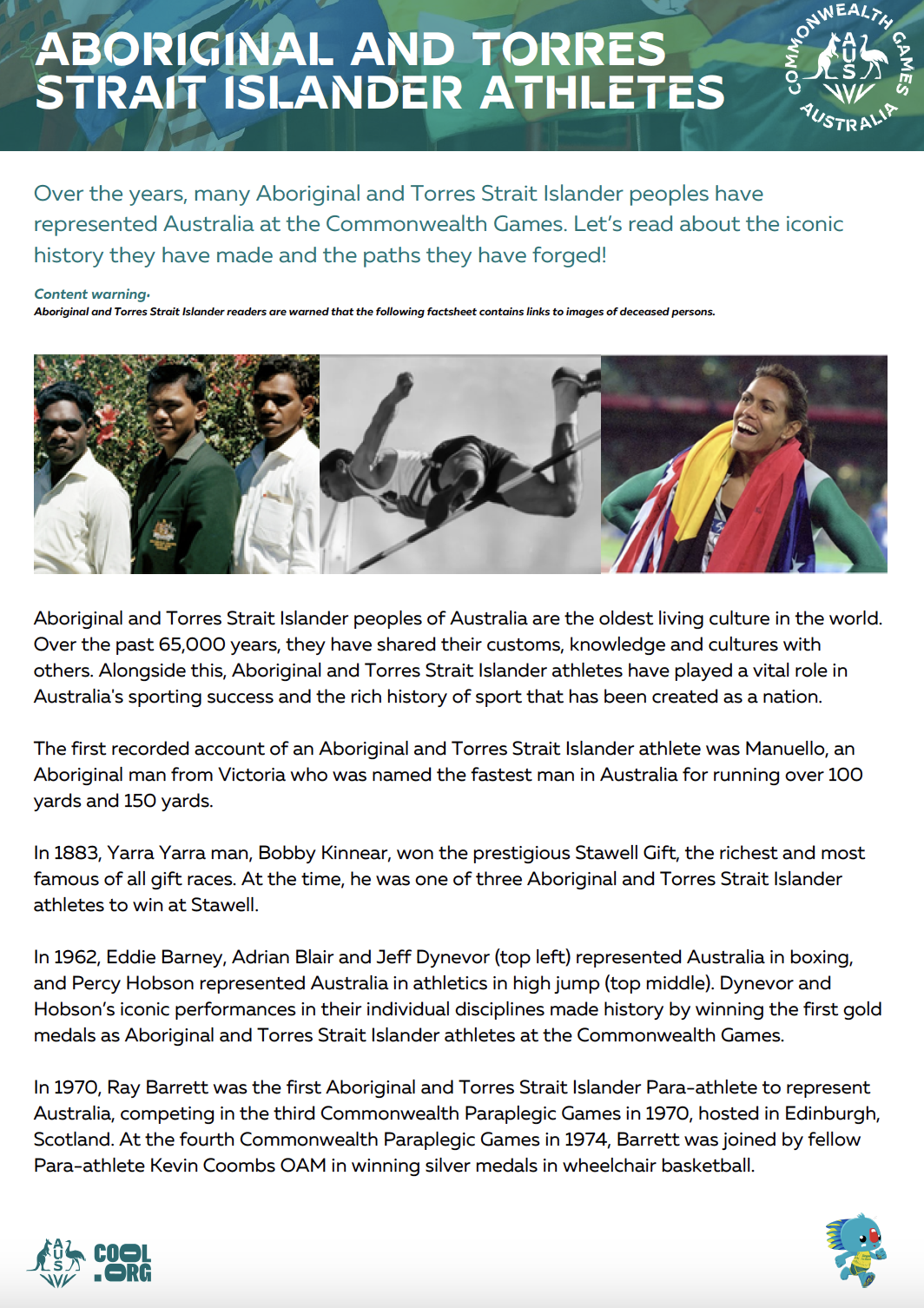
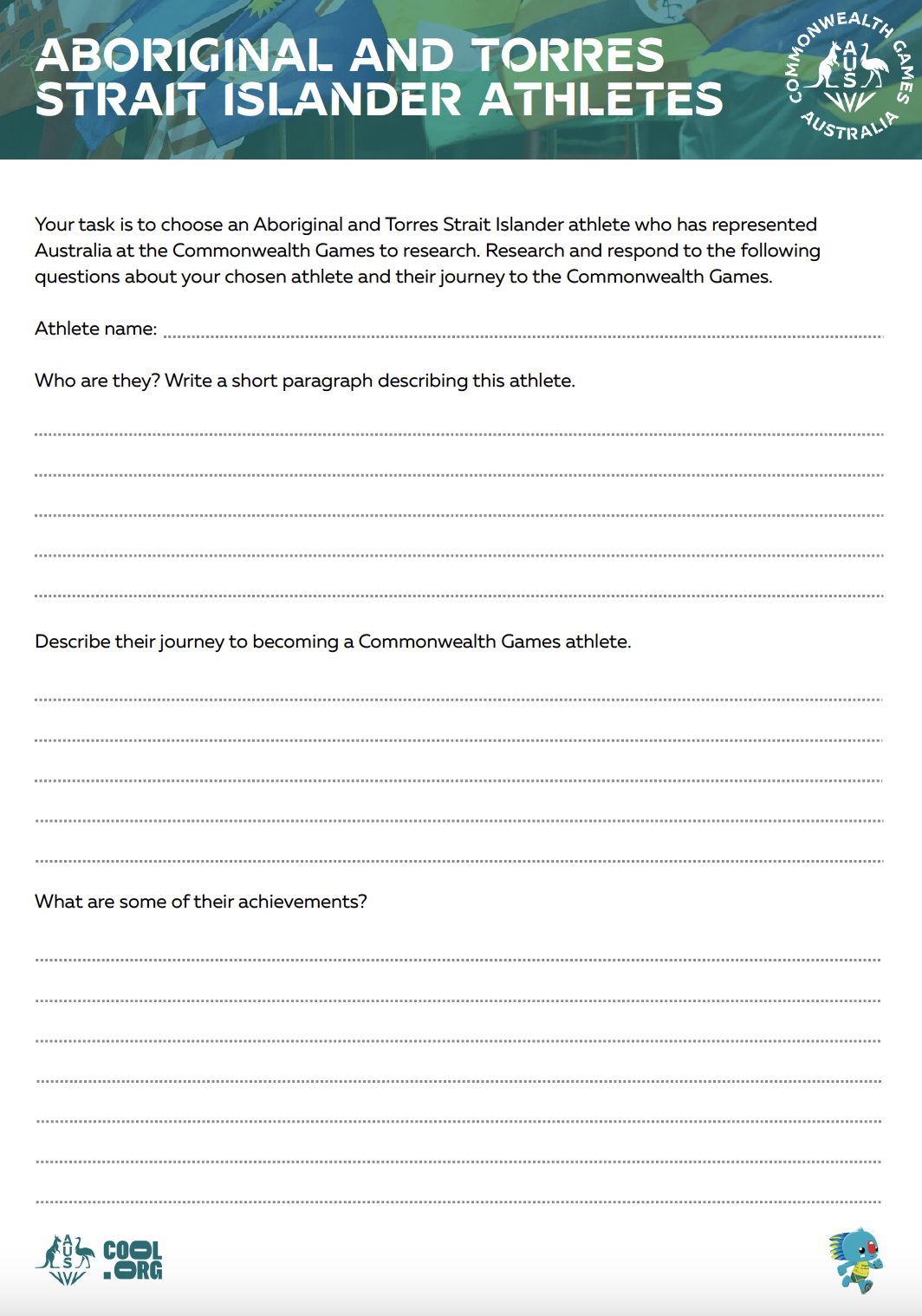
Curriculum links
Select your curriculum from the options below.
Lesson details
Skills
This lesson is designed to build students’ competencies in the following skills:
- critical thinking
- collaboration
- communication
- cultural understanding
- digital literacy
- empathy
- ethical understanding
- intercultural understanding
Curriculum Mapping
Australian Curriculum (v9.0) content description:
Year 9 and 10 Health and Physical Education
- Students learn to analyse factors that shape identities and evaluate how individuals influence the identities of others (AC9HP10P01).
- Students learn to propose strategies and actions individuals and groups can implement to challenge biases, stereotypes, prejudices and discrimination and promote inclusion in their communities (AC9HP10P05).
- Students learn to demonstrate fair play and reflect on how ethical behaviour can influence physical activity outcomes for individuals and groups (AC9HP10M08).
Relevant parts of Year 9 and 10 Health and Physical Education achievement standards: Students propose and evaluate personal strategies to manage their identities, emotions and responses to change. They evaluate how attitudes and beliefs about equality, respect, diversity and inclusion influence the nature and quality of relationships. Students apply and evaluate leadership approaches, collaboration strategies and ethical behaviours across a range of movement contexts.
General capabilities: Critical and Creative Thinking, Intercultural Understanding, Literacy, Personal and Social Capability
Cross-curriculum priority: Aboriginal and Torres Strait Islander Histories and Cultures.
Level of teacher scaffolding: Low – teachers will need to facilitate class discussions and assist students with understanding key topics and concepts. Students may need guidance with creating their digital presentations.
UN Sustainable Development Goals
- Target 4.7: By 2030, ensure that all learners acquire the knowledge and skills needed to promote sustainable development, including, among others, through education for sustainable development and sustainable lifestyles, human rights, gender equality, promotion of a culture of peace and non-violence, global citizenship and appreciation of cultural diversity and of culture’s contribution to sustainable development.
Resources Required
- device for displaying audiovisual material
- Student Worksheet (1 per student)
- Aboriginal and Torres Strait Islander Athletes Factsheet
- student access to individual digital devices such as iPads, tablets or laptops
- whiteboard and whiteboard markers
Additional Info
These resources have been created with the support of the Australian Commonwealth Games Team, via Commonwealth Games Australia.
The Australian Commonwealth Games Team are set to take on the athletes of he world at the Glasgow 2026 Commonwealth Games from next year, and together the more than 250 athletes in green and gold aim to be the top nation at the Games in terms of gold and overall medals won, the number of medallists, and the number of sports winning medals.
You can cheer on Australia’s best across the screens of 7 and 7Plus from 23 July 2026.
Related Professional Learning
Beginning to Include First Nations Peoples’ Perspectives in Your Classroom
Quick Summary: This course is designed to inform and upskill educators in incorporating Aboriginal and Torres Strait Islander perspectives in the classroom. It guides terms of reference, protocols and strategies for an inclusive classroom that celebrates diversity.
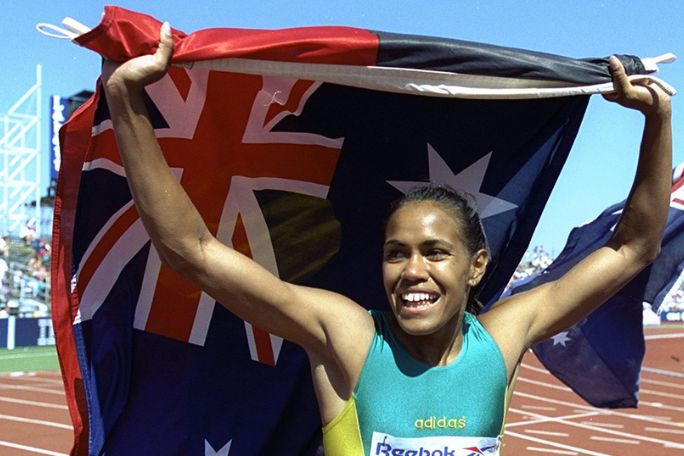
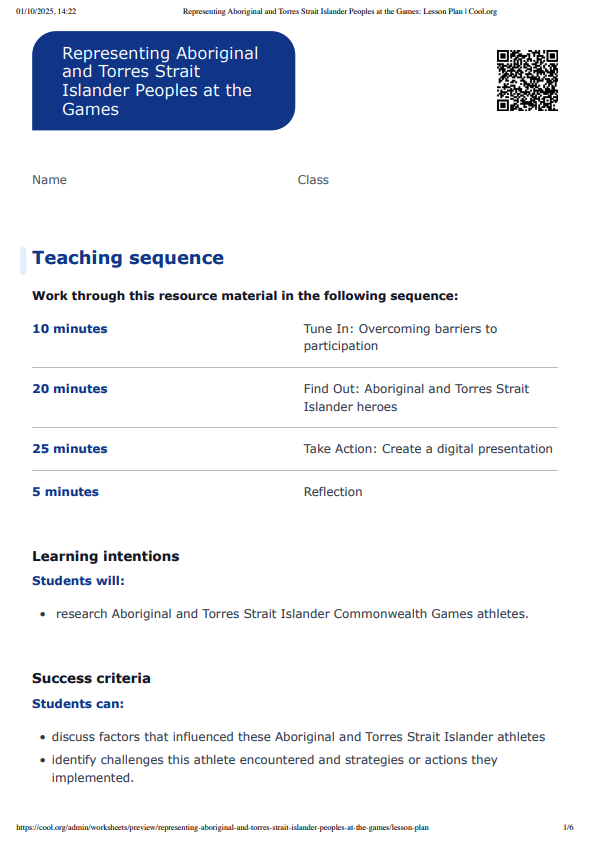
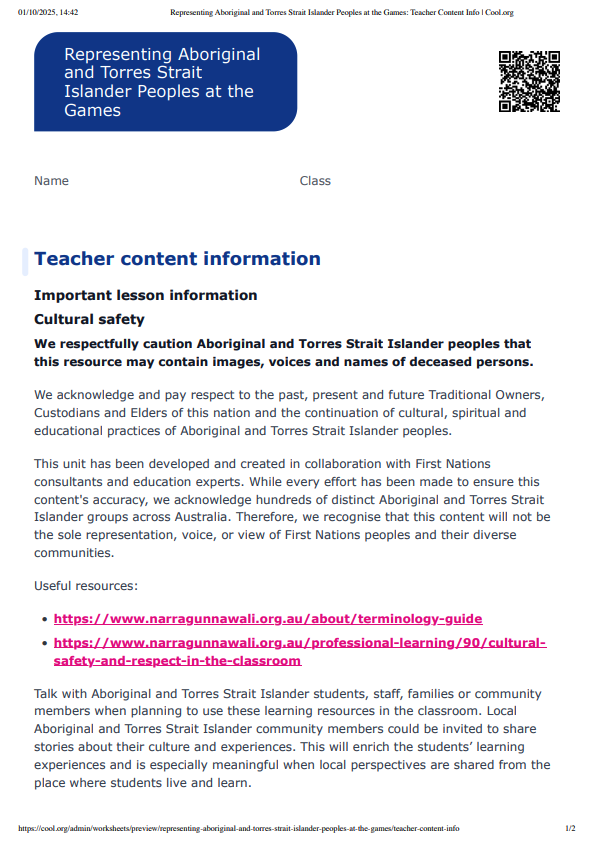
Welcome back!
Don't have an account yet?
Log in with:
Create your free Cool.org account.
Many of our resources are free, with an option to upgrade to Cool+ for premium content.
Already have an account?
Sign up with:
By signing up you accept Cool.org's Terms and Conditions(Opens in new tab) and Privacy Policy(Opens in new tab).